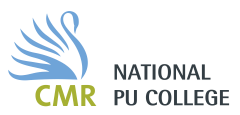The Power of Critical Thinking: How to Navigate the Information Age
In an era defined by instant access to a vast sea of information, the ability to think critically has never been more crucial. As I PU and II PU students, you find yourselves at the forefront of the Information Age, where knowledge is readily available but discerning fact from fiction can be challenging. In this blog, we’ll explore the significance of critical thinking and provide you with practical tips on how to navigate this information-rich landscape.
The Information Age: A Blessing and a Challenge
The Information Age has revolutionized the way we access and consume information. With the internet as our library and search engines as our librarians, answers to our questions are just a few clicks away. However, this convenience comes with a price. The deluge of information can be overwhelming, and not all sources are reliable or truthful.
Defining Critical Thinking
Critical thinking is the art of thinking about thinking. It involves actively and objectively analyzing information, concepts, situations, or problems to make reasoned judgments. In essence, it’s about being a sceptical thinker, not accepting information at face value, and asking questions like:
Who is the source?
What is their agenda or bias, if any?
Is the information based on evidence or opinion?
Are there alternative perspectives or viewpoints?
Recognizing Bias and Misinformation
One of the first steps in developing critical thinking skills is learning to recognize bias and misinformation. Bias can slant information in one direction, while misinformation presents false or inaccurate data. Here are some tips to spot them:
Diverse Sources: Seek information from a variety of sources to get a more balanced perspective.
Fact-Checking: Verify information through fact-checking websites or trusted sources.
Question Everything: Challenge your assumptions and question the motives of those presenting information.
Evaluating Sources: Not all sources are created equal. When assessing the reliability of a source, consider the following:
Authorship: Is the author an expert in the field? What are their credentials?
Publication Date: Is the information up-to-date and relevant to your topic?
Credibility: Is the source affiliated with a reputable institution or organization?
Analyzing Arguments: Critical thinking involves the ability to analyze arguments and identify logical fallacies. Logical fallacies are errors in reasoning that can weaken an argument. Some common fallacies include:
Ad Hominem: Attacking the person making the argument rather than the idea itself.
Straw Man: Misrepresenting or exaggerating someone’s argument to make it easier to attack.
Circular Reasoning: Using the conclusion to support the premise, essentially saying the same thing twice.
Developing Critical Thinking Habits: Critical thinking is not a one-time event but a habit that can be cultivated. Here are some ways to practice and develop your critical thinking skills:
Read Widely: Explore diverse viewpoints and read material that challenges your beliefs.
Engage in Discussions: Participate in debates, discussions, and forums to practice thinking on your feet.
Ask Questions: Don’t be afraid to ask questions and seek clarification when something isn’t clear.
Reflect: Take time to ponder what you’ve learned and how it fits into your existing knowledge.
Conclusion
In the Information Age, the power of critical thinking is your most valuable tool. It empowers you to navigate the sea of information with confidence, make informed decisions, and contribute meaningfully to discussions and debates. As you continue your education and embark on future endeavours, remember that being a critical thinker is not only about what you know but how you think. Embrace the challenge of the Information Age, and let critical thinking be your guiding light in a world awash with information.

Mr. Francis
Teaching Staff
CMR NPUC, BTM Layout

